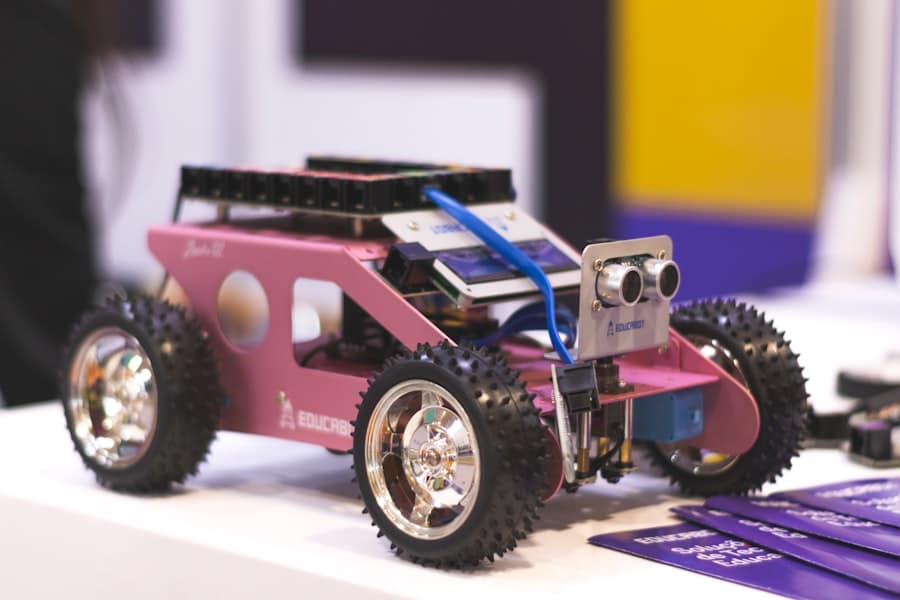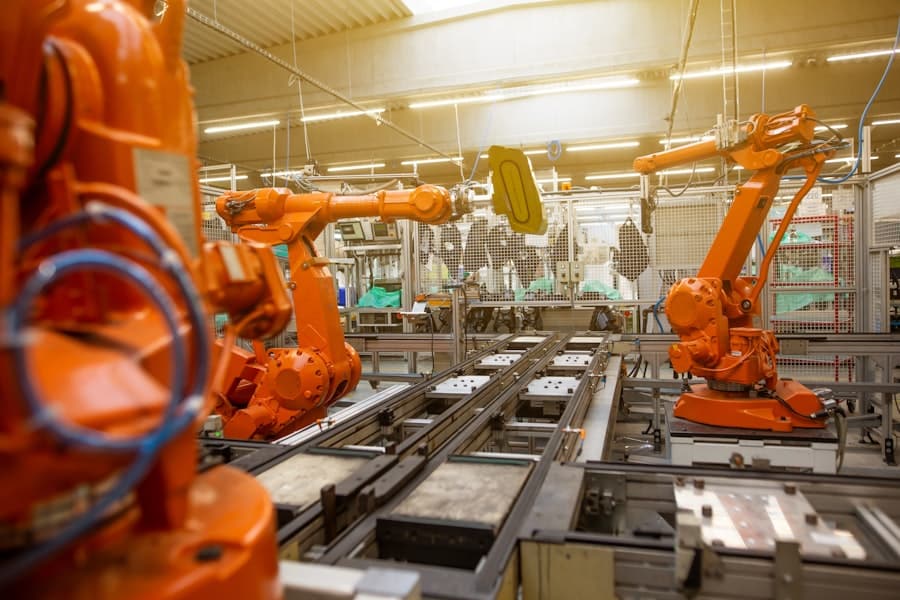The integration of robotics into mining and resource extraction has emerged as a transformative force within the industry, reshaping traditional practices and enhancing operational efficiency. As the demand for minerals and resources continues to escalate, driven by technological advancements and population growth, the mining sector faces increasing pressure to optimize production while minimizing environmental impact. Robotics offers a solution to these challenges, providing innovative tools that can operate in hazardous environments, reduce human labor, and improve overall productivity.
The evolution of robotics in this field is not merely a trend; it represents a fundamental shift in how resources are extracted and managed. Historically, mining has been characterized by labor-intensive processes that often expose workers to dangerous conditions. The introduction of robotic systems has the potential to mitigate these risks significantly.
Autonomous vehicles, drones, and robotic arms are now being deployed in various stages of mining operations, from exploration to extraction and processing. These technologies not only enhance safety but also enable more precise and efficient resource extraction. As the industry continues to evolve, understanding the role of robotics becomes essential for stakeholders aiming to navigate the complexities of modern mining and resource extraction.
Key Takeaways
- Robotics in mining and resource extraction is revolutionizing the industry by introducing automation and advanced technology.
- The use of robotics in mining and resource extraction offers advantages such as increased safety, efficiency, and productivity.
- Various types of robotics are used in mining and resource extraction, including autonomous vehicles, drones, and robotic drilling systems.
- Challenges and limitations of robotics in mining and resource extraction include high initial costs, technical complexities, and the need for skilled operators.
- Robotics have a significant impact on safety and efficiency in mining and resource extraction, reducing the risk of accidents and improving operational performance.
- Future trends and innovations in robotics for mining and resource extraction include the development of more advanced autonomous systems and the integration of artificial intelligence.
- The environmental and social implications of robotics in mining and resource extraction include reduced environmental impact and potential job displacement.
- In conclusion, robotics play a crucial role in shaping the future of mining and resource extraction, offering opportunities for improved sustainability and operational excellence.
Advantages of Using Robotics in Mining and Resource Extraction
The advantages of incorporating robotics into mining operations are manifold, with safety being one of the most significant benefits. By deploying robots in hazardous environments, companies can protect their workforce from exposure to dangerous conditions such as toxic gases, cave-ins, and heavy machinery accidents. For instance, autonomous drilling rigs can operate in remote locations where human presence would be risky, thereby reducing the likelihood of accidents and injuries.
This shift not only safeguards workers but also enhances overall morale, as employees are less likely to face life-threatening situations. In addition to safety improvements, robotics contributes to increased efficiency and productivity. Automated systems can operate continuously without the need for breaks or shifts, leading to higher output levels.
For example, robotic haul trucks can transport materials from mines to processing facilities with precision and speed, optimizing logistics and reducing downtime. Furthermore, advanced data analytics integrated with robotic systems allow for real-time monitoring and decision-making, enabling operators to respond swiftly to changing conditions and maximize resource recovery rates. This combination of continuous operation and data-driven insights positions robotics as a key player in enhancing the economic viability of mining operations.
Types of Robotics Used in Mining and Resource Extraction

The landscape of robotics in mining is diverse, encompassing various types of machines designed for specific tasks within the extraction process. One prominent category is autonomous vehicles, which include self-driving trucks and drones. These vehicles are equipped with sophisticated navigation systems that allow them to traverse challenging terrains without human intervention.
For instance, companies like Rio Tinto have successfully implemented autonomous haul trucks in their operations, resulting in significant cost savings and improved safety metrics. Another critical type of robotics used in mining is robotic arms and manipulators. These machines are designed for tasks such as drilling, sampling, and material handling.
Robotic arms can perform repetitive tasks with high precision, reducing the risk of human error and increasing operational efficiency. In underground mining operations, robotic arms can be deployed to conduct inspections or repairs in areas that are difficult for humans to access safely. This capability not only streamlines maintenance processes but also extends the lifespan of mining equipment by ensuring timely interventions.
Challenges and Limitations of Robotics in Mining and Resource Extraction
Despite the numerous advantages that robotics brings to mining and resource extraction, several challenges and limitations must be addressed for widespread adoption. One significant hurdle is the high initial investment required for robotic systems. The cost of acquiring advanced machinery, coupled with the need for specialized training for personnel, can be prohibitive for smaller mining companies.
This financial barrier often results in a slower adoption rate among organizations that may benefit from robotic technologies but lack the capital to invest. Moreover, the integration of robotics into existing mining operations can be complex. Many mines operate with legacy systems that may not be compatible with new technologies.
This incompatibility can lead to disruptions during the transition phase as companies work to integrate robotic systems into their workflows. Additionally, there is a learning curve associated with operating advanced robotic technologies. Employees must be trained not only to use these machines but also to understand the data analytics that accompany them.
Impact of Robotics on Safety and Efficiency in Mining and Resource Extraction
The impact of robotics on safety within the mining sector cannot be overstated. By taking over dangerous tasks traditionally performed by humans, robots significantly reduce the risk of accidents and injuries. For example, robotic drones equipped with cameras can conduct aerial surveys of mining sites, identifying potential hazards without putting human lives at risk.
Efficiency gains from robotics are equally noteworthy. Automated systems can optimize various aspects of mining operations, from exploration to extraction and processing.
For instance, robotic drilling systems can analyze geological data in real-time, adjusting drilling parameters on-the-fly to maximize resource recovery while minimizing waste. This level of precision not only enhances productivity but also contributes to more sustainable practices by reducing the environmental footprint associated with over-extraction or inefficient resource use.
Future Trends and Innovations in Robotics for Mining and Resource Extraction

As technology continues to advance at a rapid pace, the future of robotics in mining holds exciting possibilities. One emerging trend is the increased use of artificial intelligence (AI) in conjunction with robotic systems. AI algorithms can analyze vast amounts of data generated by mining operations, enabling predictive maintenance and optimizing resource allocation.
For example, AI-driven analytics can forecast equipment failures before they occur, allowing companies to schedule maintenance proactively rather than reactively. Another promising innovation is the development of collaborative robots or cobots that work alongside human operators. These machines are designed to assist rather than replace human workers, enhancing productivity while maintaining a human touch in operations.
Cobots can handle repetitive tasks or heavy lifting, allowing skilled workers to focus on more complex decision-making processes that require human judgment. This collaborative approach not only improves efficiency but also fosters a more harmonious working environment where humans and robots coexist.
Environmental and Social Implications of Robotics in Mining and Resource Extraction
The environmental implications of robotics in mining are significant, particularly as industries face increasing scrutiny regarding their ecological impact. Robotic technologies can contribute to more sustainable practices by minimizing waste and optimizing resource extraction processes. For instance, precision mining techniques enabled by robotics can reduce the amount of land disturbed during extraction activities, preserving surrounding ecosystems and biodiversity.
Socially, the introduction of robotics into mining raises important questions about employment and workforce dynamics. While automation has the potential to displace certain jobs, it also creates opportunities for new roles focused on managing and maintaining robotic systems. The challenge lies in ensuring that workers are equipped with the necessary skills to thrive in this evolving landscape.
Companies must invest in training programs that prepare employees for a future where human-robot collaboration is commonplace.
The Role of Robotics in Shaping the Future of Mining and Resource Extraction
Robotics is poised to play a pivotal role in shaping the future of mining and resource extraction by enhancing safety, efficiency, and sustainability within the industry. As companies continue to adopt advanced technologies, they will need to navigate challenges related to investment costs and workforce adaptation while embracing the opportunities presented by automation. The ongoing evolution of robotics will not only redefine operational practices but also influence broader societal perceptions of mining as an industry capable of innovation and responsibility.
In this context, stakeholders must remain vigilant about the environmental and social implications of robotic integration into mining operations. By prioritizing sustainable practices and investing in workforce development, the industry can harness the full potential of robotics while addressing concerns related to job displacement and ecological impact. Ultimately, the successful integration of robotics into mining will depend on a collaborative approach that balances technological advancement with ethical considerations, ensuring a future where both resources and communities thrive.
In the rapidly evolving field of mining and resource extraction, robotics is playing a pivotal role in redefining traditional practices. As industries increasingly adopt advanced technologies to enhance efficiency and safety, the integration of robotics is becoming indispensable. A related article that delves into the technological advancements in another sector is The Top 5 Smartwatches of 2023. This article explores the latest innovations in smartwatch technology, highlighting how cutting-edge features are transforming user experiences. Both articles underscore the broader trend of technology reshaping industries by improving functionality and user engagement.
FAQs
What is robotics in the context of mining and resource extraction?
Robotics in mining and resource extraction refers to the use of automated machines and technologies to perform tasks such as drilling, excavation, transportation, and processing of materials in the mining industry. These robots are designed to operate in harsh and hazardous environments, increasing efficiency and safety in the extraction process.
How is robotics redefining mining and resource extraction?
Robotics is redefining mining and resource extraction by enabling the industry to automate repetitive and dangerous tasks, improve precision and accuracy in operations, and enhance safety for workers. Additionally, robotics allows for continuous operation and data collection, leading to increased productivity and cost savings.
What are the benefits of using robotics in mining and resource extraction?
The benefits of using robotics in mining and resource extraction include improved safety for workers, increased efficiency and productivity, reduced operational costs, enhanced data collection and analysis, and the ability to access and extract resources from previously inaccessible or hazardous locations.
What are some examples of robotics used in mining and resource extraction?
Examples of robotics used in mining and resource extraction include autonomous haul trucks, robotic drilling systems, unmanned aerial vehicles (drones) for surveying and mapping, robotic sorting and processing systems, and remotely operated machinery for underground mining operations.
What are the challenges of implementing robotics in mining and resource extraction?
Challenges of implementing robotics in mining and resource extraction include the high initial investment costs, the need for specialized training and maintenance of robotic systems, potential job displacement for human workers, and the integration of robotics with existing infrastructure and operations.

